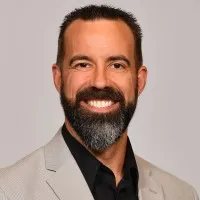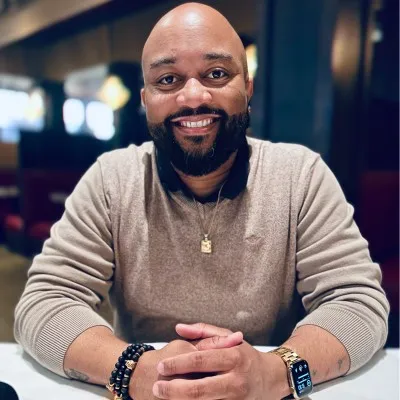Product-led growth (PLG), the process of putting the product at the center of the buying journey, has excellent benefits for organizations looking to easily set up their sales and product strategy. That said, this approach is often quite lengthy, and can make it more difficult to convert business when teams do not approach it correctly. As solutions become more and more complex, it is critical that product-led organizations put the product front and center to allow potential customers more time to understand what the company offers.
In other words, in order to solve for the customer, businesses need to implement a light PreSales touch by incorporating the human touch needed to bring these complex solutions to life. Think of PLG for complex solutions like a self-driving car. Although we’ve taken huge leaps towards fully autonomous vehicles, the technology isn’t there yet. Because of this, we still need to keep our hands on the wheel and pay attention to the road while we finalize the technology.
Now how do self-driving cars relate to a light PreSales touch? Well, implementing this is vital to solve for those complex problems:
- The PLG motion takes a long time to convert - the data is still light but average sales cycle lengths are longer than sales led motions.
- PLG by itself doesn’t effectively answer customer questions. The product is never perfect, and buyers often have questions that need to be answered before they’re ready to make a purchase.
- Buyers these days want to experiment with products on their own and they want to learn on their own. They are 57-70% of the way through their buying research before they ever talk to a salesperson.
- Buyers of these complex solutions have technical questions they need answers to, but they want easy ways to engage with businesses to get them answered.
How to Solve These Problems
At HubSpot, we’ve learned we can accelerate the PLG motion by using Inbound Success Coaches (ISCs). They help answer those technical questions for prospects, replay any “bugs” in the buying process that are getting in the way of success, explain the product, and shepherd the buyer through the buying process.
They’re a trusted advisor for the prospect. After all, PLG doesn’t mean you need to let the buyer answer all their own questions and find their way to the decision to purchase. Instead, you’re letting the product sell itself by allowing potential buyers to evaluate it on their own timeline. When you have a complex product, having someone to guide prospects through the PLG process can enhance that experience.
At HubSpot, our sales engineers also play a big part in this motion, but in an indirect way. Their role is to create pre-packaged content, build micro-demos, share knowledge with the ISC team through our PreSales knowledge base, and support them behind the scenes. Both teams are working seamlessly together to make PLG work for us and our buyers.
How HubSpot Learned What PLG Success Looked Like
When we first launched our PLG motion at HubSpot, we weren’t sure what the next steps in our sales process should be after a user signed up to use our free version. So we had our BDRs get out there and call all our free signups to see if they wanted to pay for a premium version. They didn’t - they would have clicked the “Book a Demo” button on the website next to the free signup one if they had - so we weren’t making the sale.
On top of that, our BDRs were getting these technical questions from users they didn’t know how to answer, which made them hesitant to call. No one succeeded with this experiment.
Instead, we shifted to a support-oriented motion. We now use an automated onboarding process for new users to make sure they get up and running successfully. From there, they’ll get a pop-up chat asking them if they need help with anything. They pretty frequently respond yes, and our ISC team helps them solve whatever is going on, which drives them to see value from the product faster. They get to use the product more effectively, and we’re able to uncover where the process pain points are and help them buy when they’re ready.
This PLG path looks more like support, coaching, and education with that light human touch than a classic sales approach or a totally hands-off PLG motion. We lead with “how can we help you?” instead of “buy now!”, and that’s been really effective.
To go back to the self-driving car analogy, our product is too complex for users to jump in without any guidance or help and see the full value. That’s not a flaw - it’s just that our product has many features and facets, and our users are busy people with lots of other tasks to handle. They don’t have weeks to poke around into everything our product does.
So instead of simply handing them the keys to this high-powered vehicle and hoping they get where they’re going as they figure it out themselves, we provide just enough guidance when they need it. They get where they’re going more effectively, but they’re still in charge of the process at the end of the day and can get as much or as little help from our ISCs and their PreSales partners as they like.
Key Takeaways
The key to success for complex solutions using a PLG motion is adding in a light human touch. That combination of effective automation and high-quality service provides a clear path to non-linear growth as it allows your buyers to buy in the way they prefer and your PreSales organization to scale their services effectively. Let your product lead the way, and see where this model can take you.

Channing is the VP of Global Sales Strategy, Operations and Sales Acceleration for Hubspot. He runs a global organization of operations and sales professionals. He is a highly successful go-to-market leader with extensive experience developing and growing international teams and implementing systems across global SaaS companies. Prior to joining Hubspot he has had extensive sales leadership and sales operations experience across several technology companies including Acquia, C2FO and S&P Capital IQ where he spent over 12 years of his career. He played a critical role in helping S&P Capital IQ scale to be a $1bn revenue company. Prior to Capital IQ, Channing was a management consultant at Navigant Consulting.
Channing holds a BS in Business Management from Villanova University. He, his wife and two children (daughter 13 and son 9) live in Wayland, MA.
Featured image via Product-Led Growth Collective
Product-led growth (PLG), the process of putting the product at the center of the buying journey, has excellent benefits for organizations looking to easily set up their sales and product strategy. That said, this approach is often quite lengthy, and can make it more difficult to convert business when teams do not approach it correctly. As solutions become more and more complex, it is critical that product-led organizations put the product front and center to allow potential customers more time to understand what the company offers.
In other words, in order to solve for the customer, businesses need to implement a light PreSales touch by incorporating the human touch needed to bring these complex solutions to life. Think of PLG for complex solutions like a self-driving car. Although we’ve taken huge leaps towards fully autonomous vehicles, the technology isn’t there yet. Because of this, we still need to keep our hands on the wheel and pay attention to the road while we finalize the technology.
Now how do self-driving cars relate to a light PreSales touch? Well, implementing this is vital to solve for those complex problems:
- The PLG motion takes a long time to convert - the data is still light but average sales cycle lengths are longer than sales led motions.
- PLG by itself doesn’t effectively answer customer questions. The product is never perfect, and buyers often have questions that need to be answered before they’re ready to make a purchase.
- Buyers these days want to experiment with products on their own and they want to learn on their own. They are 57-70% of the way through their buying research before they ever talk to a salesperson.
- Buyers of these complex solutions have technical questions they need answers to, but they want easy ways to engage with businesses to get them answered.
How to Solve These Problems
At HubSpot, we’ve learned we can accelerate the PLG motion by using Inbound Success Coaches (ISCs). They help answer those technical questions for prospects, replay any “bugs” in the buying process that are getting in the way of success, explain the product, and shepherd the buyer through the buying process.
They’re a trusted advisor for the prospect. After all, PLG doesn’t mean you need to let the buyer answer all their own questions and find their way to the decision to purchase. Instead, you’re letting the product sell itself by allowing potential buyers to evaluate it on their own timeline. When you have a complex product, having someone to guide prospects through the PLG process can enhance that experience.
At HubSpot, our sales engineers also play a big part in this motion, but in an indirect way. Their role is to create pre-packaged content, build micro-demos, share knowledge with the ISC team through our PreSales knowledge base, and support them behind the scenes. Both teams are working seamlessly together to make PLG work for us and our buyers.
How HubSpot Learned What PLG Success Looked Like
When we first launched our PLG motion at HubSpot, we weren’t sure what the next steps in our sales process should be after a user signed up to use our free version. So we had our BDRs get out there and call all our free signups to see if they wanted to pay for a premium version. They didn’t - they would have clicked the “Book a Demo” button on the website next to the free signup one if they had - so we weren’t making the sale.
On top of that, our BDRs were getting these technical questions from users they didn’t know how to answer, which made them hesitant to call. No one succeeded with this experiment.
Instead, we shifted to a support-oriented motion. We now use an automated onboarding process for new users to make sure they get up and running successfully. From there, they’ll get a pop-up chat asking them if they need help with anything. They pretty frequently respond yes, and our ISC team helps them solve whatever is going on, which drives them to see value from the product faster. They get to use the product more effectively, and we’re able to uncover where the process pain points are and help them buy when they’re ready.
This PLG path looks more like support, coaching, and education with that light human touch than a classic sales approach or a totally hands-off PLG motion. We lead with “how can we help you?” instead of “buy now!”, and that’s been really effective.
To go back to the self-driving car analogy, our product is too complex for users to jump in without any guidance or help and see the full value. That’s not a flaw - it’s just that our product has many features and facets, and our users are busy people with lots of other tasks to handle. They don’t have weeks to poke around into everything our product does.
So instead of simply handing them the keys to this high-powered vehicle and hoping they get where they’re going as they figure it out themselves, we provide just enough guidance when they need it. They get where they’re going more effectively, but they’re still in charge of the process at the end of the day and can get as much or as little help from our ISCs and their PreSales partners as they like.
Key Takeaways
The key to success for complex solutions using a PLG motion is adding in a light human touch. That combination of effective automation and high-quality service provides a clear path to non-linear growth as it allows your buyers to buy in the way they prefer and your PreSales organization to scale their services effectively. Let your product lead the way, and see where this model can take you.

Channing is the VP of Global Sales Strategy, Operations and Sales Acceleration for Hubspot. He runs a global organization of operations and sales professionals. He is a highly successful go-to-market leader with extensive experience developing and growing international teams and implementing systems across global SaaS companies. Prior to joining Hubspot he has had extensive sales leadership and sales operations experience across several technology companies including Acquia, C2FO and S&P Capital IQ where he spent over 12 years of his career. He played a critical role in helping S&P Capital IQ scale to be a $1bn revenue company. Prior to Capital IQ, Channing was a management consultant at Navigant Consulting.
Channing holds a BS in Business Management from Villanova University. He, his wife and two children (daughter 13 and son 9) live in Wayland, MA.
Featured image via Product-Led Growth Collective
Product-led growth (PLG), the process of putting the product at the center of the buying journey, has excellent benefits for organizations looking to easily set up their sales and product strategy. That said, this approach is often quite lengthy, and can make it more difficult to convert business when teams do not approach it correctly. As solutions become more and more complex, it is critical that product-led organizations put the product front and center to allow potential customers more time to understand what the company offers.
In other words, in order to solve for the customer, businesses need to implement a light PreSales touch by incorporating the human touch needed to bring these complex solutions to life. Think of PLG for complex solutions like a self-driving car. Although we’ve taken huge leaps towards fully autonomous vehicles, the technology isn’t there yet. Because of this, we still need to keep our hands on the wheel and pay attention to the road while we finalize the technology.
Now how do self-driving cars relate to a light PreSales touch? Well, implementing this is vital to solve for those complex problems:
- The PLG motion takes a long time to convert - the data is still light but average sales cycle lengths are longer than sales led motions.
- PLG by itself doesn’t effectively answer customer questions. The product is never perfect, and buyers often have questions that need to be answered before they’re ready to make a purchase.
- Buyers these days want to experiment with products on their own and they want to learn on their own. They are 57-70% of the way through their buying research before they ever talk to a salesperson.
- Buyers of these complex solutions have technical questions they need answers to, but they want easy ways to engage with businesses to get them answered.
How to Solve These Problems
At HubSpot, we’ve learned we can accelerate the PLG motion by using Inbound Success Coaches (ISCs). They help answer those technical questions for prospects, replay any “bugs” in the buying process that are getting in the way of success, explain the product, and shepherd the buyer through the buying process.
They’re a trusted advisor for the prospect. After all, PLG doesn’t mean you need to let the buyer answer all their own questions and find their way to the decision to purchase. Instead, you’re letting the product sell itself by allowing potential buyers to evaluate it on their own timeline. When you have a complex product, having someone to guide prospects through the PLG process can enhance that experience.
At HubSpot, our sales engineers also play a big part in this motion, but in an indirect way. Their role is to create pre-packaged content, build micro-demos, share knowledge with the ISC team through our PreSales knowledge base, and support them behind the scenes. Both teams are working seamlessly together to make PLG work for us and our buyers.
How HubSpot Learned What PLG Success Looked Like
When we first launched our PLG motion at HubSpot, we weren’t sure what the next steps in our sales process should be after a user signed up to use our free version. So we had our BDRs get out there and call all our free signups to see if they wanted to pay for a premium version. They didn’t - they would have clicked the “Book a Demo” button on the website next to the free signup one if they had - so we weren’t making the sale.
On top of that, our BDRs were getting these technical questions from users they didn’t know how to answer, which made them hesitant to call. No one succeeded with this experiment.
Instead, we shifted to a support-oriented motion. We now use an automated onboarding process for new users to make sure they get up and running successfully. From there, they’ll get a pop-up chat asking them if they need help with anything. They pretty frequently respond yes, and our ISC team helps them solve whatever is going on, which drives them to see value from the product faster. They get to use the product more effectively, and we’re able to uncover where the process pain points are and help them buy when they’re ready.
This PLG path looks more like support, coaching, and education with that light human touch than a classic sales approach or a totally hands-off PLG motion. We lead with “how can we help you?” instead of “buy now!”, and that’s been really effective.
To go back to the self-driving car analogy, our product is too complex for users to jump in without any guidance or help and see the full value. That’s not a flaw - it’s just that our product has many features and facets, and our users are busy people with lots of other tasks to handle. They don’t have weeks to poke around into everything our product does.
So instead of simply handing them the keys to this high-powered vehicle and hoping they get where they’re going as they figure it out themselves, we provide just enough guidance when they need it. They get where they’re going more effectively, but they’re still in charge of the process at the end of the day and can get as much or as little help from our ISCs and their PreSales partners as they like.
Key Takeaways
The key to success for complex solutions using a PLG motion is adding in a light human touch. That combination of effective automation and high-quality service provides a clear path to non-linear growth as it allows your buyers to buy in the way they prefer and your PreSales organization to scale their services effectively. Let your product lead the way, and see where this model can take you.

Channing is the VP of Global Sales Strategy, Operations and Sales Acceleration for Hubspot. He runs a global organization of operations and sales professionals. He is a highly successful go-to-market leader with extensive experience developing and growing international teams and implementing systems across global SaaS companies. Prior to joining Hubspot he has had extensive sales leadership and sales operations experience across several technology companies including Acquia, C2FO and S&P Capital IQ where he spent over 12 years of his career. He played a critical role in helping S&P Capital IQ scale to be a $1bn revenue company. Prior to Capital IQ, Channing was a management consultant at Navigant Consulting.
Channing holds a BS in Business Management from Villanova University. He, his wife and two children (daughter 13 and son 9) live in Wayland, MA.
Featured image via Product-Led Growth Collective






.webp)


